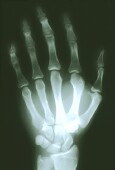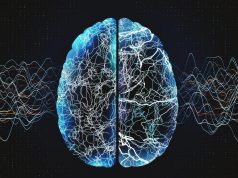Differences in shear strain and axial strain for healthy volunteers, patients with CTS
THURSDAY, March 26, 2015 (HealthDay News) — Two-dimensional (2D) ultrasonographic (US) strain imaging can quantify and map behaviors in the carpal tunnel, according to a study published in the April issue of Radiology.
Yin-Yin Liao, Ph.D., from the National Tsing Hua University in Taiwan, and colleagues examined the feasibility of 2D US strain imaging for quantifying and mapping mechanical behaviors of the median nerve, flexor retinaculum, and flexor tendons within the carpal tunnel. The authors assessed 10 wrists in healthy volunteers and 16 wrists in 12 patients with carpal tunnel syndrome (CTS). Axial normal strain was used to characterize the median nerve, while the shear strain was used to characterize the flexor tendons and flexor retinaculum. In each tissue region over the entire cycle of finger motion, the authors examined the temporal mean values (mean cumulative strain [MCS] values) and standard deviations (standard deviations of the cumulative strain [SDCS]) of the spatially averaged cumulative strains.
The researchers found that MCS was similar for patients with CTS and healthy volunteers. Patients with CTS had significantly lower SDCS for the shear strain of the flexor retinaculum (P < 0.001) compared with healthy volunteers. Compared with patents with CTS, the axial strain of the median nerve was higher for healthy volunteers (P = 0.0065).
“US strain imaging can be used to quantify and map tissue kinematics in the carpal tunnel and to differentiate abnormal from normal median nerves in the wrist,” the authors write.
Full Text (subscription or payment may be required)
Copyright © 2015 HealthDay. All rights reserved.








